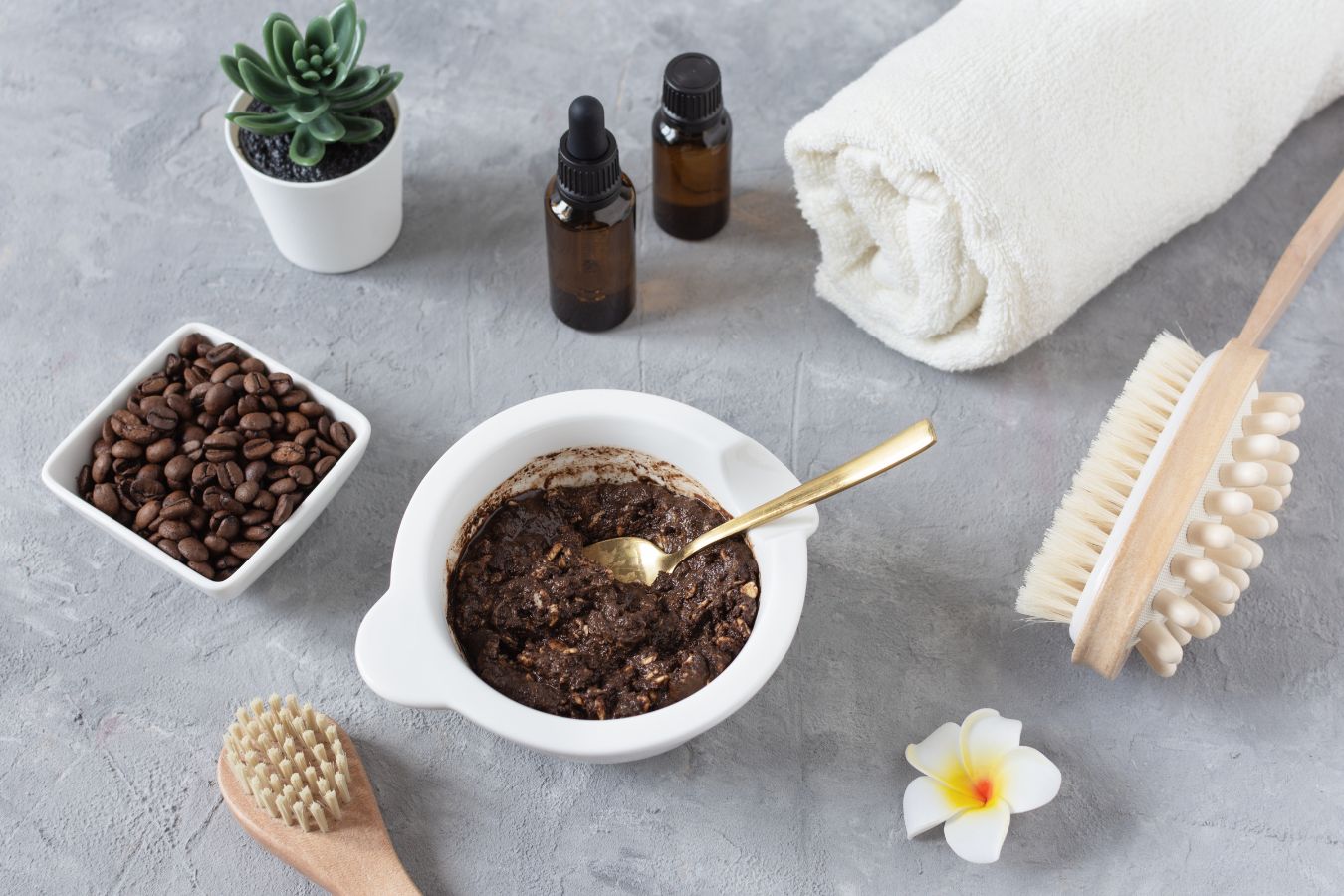
Coffee body descriptions
The term “body” is used to describe the drink’s structure, which correlates to coffee’s consistency on the taste. As a result, the body feels best when the coffee is in complete contact with the oral cavity and completely covers your tongue.
The more flavor components in coffee (acids, proteins, sugars, essential oils, scents, etc.) are picked up by tongue receptor cells, the stronger the feedback signal that it’s a coffee. Coffee is classified as a “strong body” when there are “a lot” of flavor components and as a “light body” when there are “a lot” of flavor components.

Scent (aroma) and taste (taste) alone, however, are insufficient to complete the sense of the “Body” feature. The sensation is often disregarded while describing taste (or flavor in general) and contributing to the impression of the Body (tactile).
In a nutshell, “Body Coffe” refers to coffee’s sensation on the tongue produced by a mix of viscosity and insoluble particles. As a result, the interpretation can be translated into Vietnamese as “strong” or “strong” coffee.
Body Coffee Measurement
While Body is just a component of Mouthfeel, it is communicated through intensity adjectives, rarely discussed when discussing a specific taste. Maxwell Colonna-Dashwood used contrasting pairings of descriptions in The Coffee Dictionary, such as “Heavy Body” and “Light Body.” Wikipedia compared the qualities of Body coffee and milk regarding this notion. “Heavy body” conjures up images of whole milk, whereas “Light Body” conjures up images of skimmed milk.
Even though the Body is involved in various complicated ideas in the tasting sector, most taste organs associate the Body with insoluble particles and a mouth sensation caused by oil. (According to Scott Rao, the Mouthfeel is related to the “tickling” sensation generated by the oil suspended in the coffee.)
According to Scott Rao, the Body has a more coherent approach, and it is tangentially tied to the extract concentration scale (total dissolved solids in coffee or TDS for short). Because TDS is a dissolved particle measurement, the human Body comprises insoluble substances. In general, a rise in TDS correlates with an increase in the d Body for a particular coffee extraction process.
Body coffee classification
As previously stated, quantitative words such as thin body, medium, heavy (or complete) Body are frequently used to define body coffee.
Light body coffee – A slim and light body
The Body is light (or “thin”), leaving little residue or flavor on the tongue. Light Body qualities are common in coffee grown at low altitudes and nutrient-deficient soils. Extraction procedures that remove oils and particles with filter paper might result in a brighter and lighter coffee body.
Medium-sized physique – well-balanced
The average person falls somewhere in the middle with a “light” and “heavy” Body. Because the features of Light and Heavy body coffees can be too extreme in one direction or the other, a Medium body coffee will have a more balanced texture and be simpler to enjoy every day.
Thick Body – Bodied coffees (also known as “Full Body”)
Heavy Body produces a strong palate-filling experience by combining the most significant quantities of fat, protein, and fiber in coffee. Shade-grown coffees, especially those made in volcanic soils with slow development and complete bean flavor buildup, are typically credited with having many bodies.

On the other hand, Heavy Body might result from Espresso and Moka pot mixing procedures combined with the pressure effect during the preparation process.
The impact of extracts on the Body of the coffee
We need to understand how the Body is produced, whether we want to accentuate or minimize it, which implies focusing on the extraction process.
Most of us know that hot water can only dissolve 18-22 percent of the weight of any raw coffee and that the dissolved chemicals can be split into two groups: soluble and insoluble. Substances that can be entirely dissolved in water are known as “solubles.” Insolubles, on the other hand, are particles and oils that remain suspended in coffee rather than dissolving. Proteins, long-chain polysaccharides, and lipids are the key ingredients of coffee’s insoluble, the main constituents of Body properties.
Why do some coffee cups have a whole body while others don’t?
To explain why, even though only a few varieties of coffee have truly excellent body qualities, any coffee has a “thicker” body than others. To make a cup of coffee with a “fit” body, we must consider various factors, including coffee processing procedures, roasting techniques, brewing techniques, and filters.
Potential in terms of flavor
Some coffee kinds are more Body oriented than others. Because they are natural qualities of the variety and are difficult to mess with within the cultivation process, you can refer to the potential for flavor and quality of coffee, such as Maracaturra coffee from El Socorro, Guatemala, which has a very whole and “round” Body.
Pacamara coffee, on the other hand, has a medium body and is particularly notable for its fruity flavor.
The procedure for processing
If you have a batch of coffee with low body qualities, you have three options: accept it and enjoy it; try to bring out the Body by processing, roasting, and blending; or blend with a coffee with more body. This is when we concentrate on processing to get the most out of an existing Body.
The Body of regular wet-processed coffee will be delicate and “fragile” (giving brightness and clarity to the palate). You will have a robust body with a fuller sensation if you use natural dry processing. Honey processing achieves the same results as dry processing, and in general, the more mucilage on the coffee cherries is retained, the more likely you are to boost the Body in your coffee cup.
Roasting and developing coffee for the Body
A good roaster will manage the components necessary to bring out the flavor potentials of a given coffee. Roasting is a complicated mix of coffee attributes with numerous factors, and a good roaster will control the elements necessary to bring out the flavor potentials of a given coffee.
Perfectdailygrind mentioned that we might adjust the Body by managing the time to crack in this article. If done correctly, prolonging the time to tip crack also extends the Maillard processes in the grain, perhaps resulting in more melanoidin. We get a “thicker” body in exchange.
Finally, the manner of preparation and the body coffee
We’re approaching the third coffee wave, during which manual extraction methods have been dubbed the “magic wand” of coffee flavor. Take a look at some of the tools that can help you locate the proper Body modification, such as:
First and foremost, with the ability to control the soaking period and a little pressure, you can choose to extract as much Body as you desire with a French press or an AeroPress.
The coffee extract has different “darkness-light” based on the type of filter paper used in the Pour over procedure, and some filter papers are engineered to boost the extraction ability to yield more oils. Aroma molecules (usually in essential oils) get through, and some varieties lessen bitterness for a more vibrant body.

Not to mention Espresso, of course. Because Espresso depends on pressure from a pump rather than gravity to make water flow through the coffee and bring a lot of the dissolved ingredients, it has a significantly higher extraction rate than other methods.
Into the coffee cup, Crema is a golden-brown foam made up of CO2, oil, and melanoidin, all of which are beneficial to the entire Body.
Like everything else about coffee, the Body’s understanding and evaluation are entirely subjective and depend on personal feelings. It’s possible that you won’t come across all of the above in your daily cup of coffee (it’s not simple, after all).
The best approach to learn about Body is to try a variety of coffees, brew them using various procedures, and figure out which one you like.